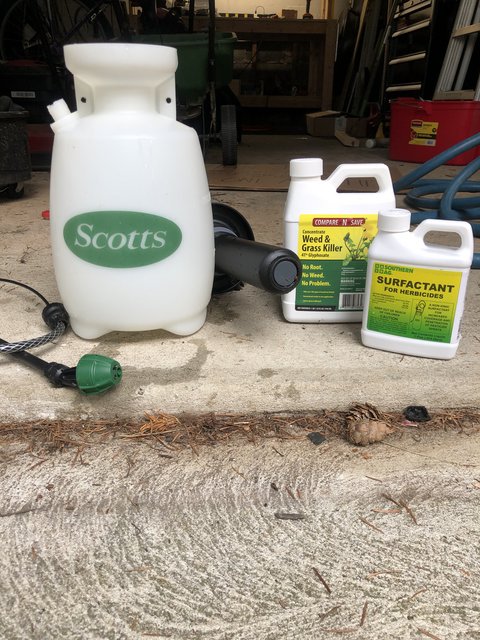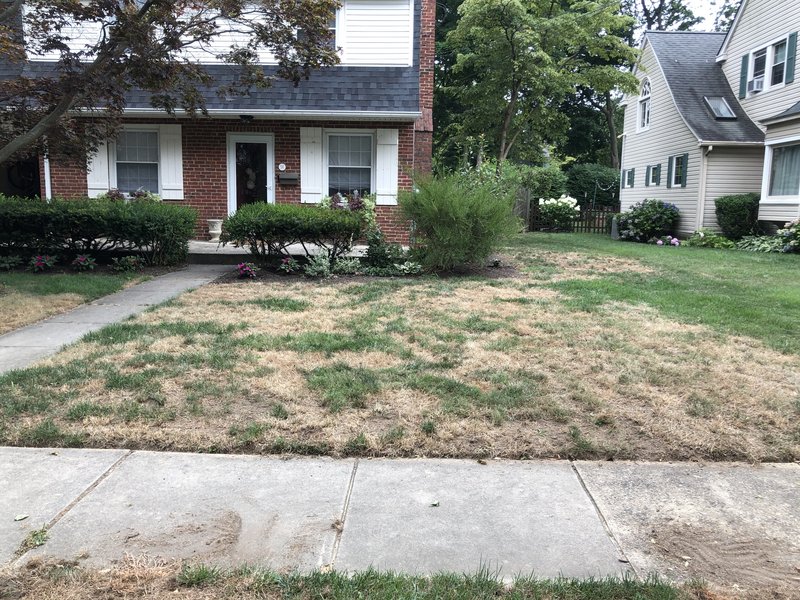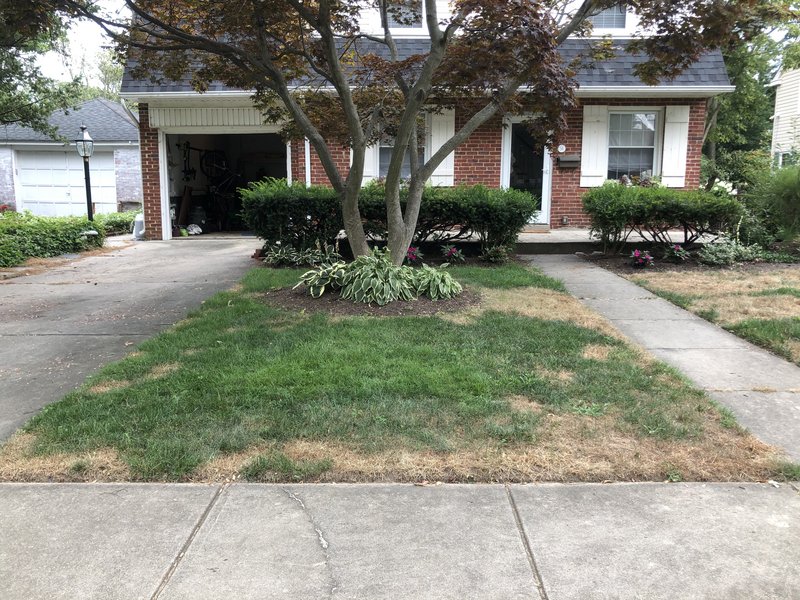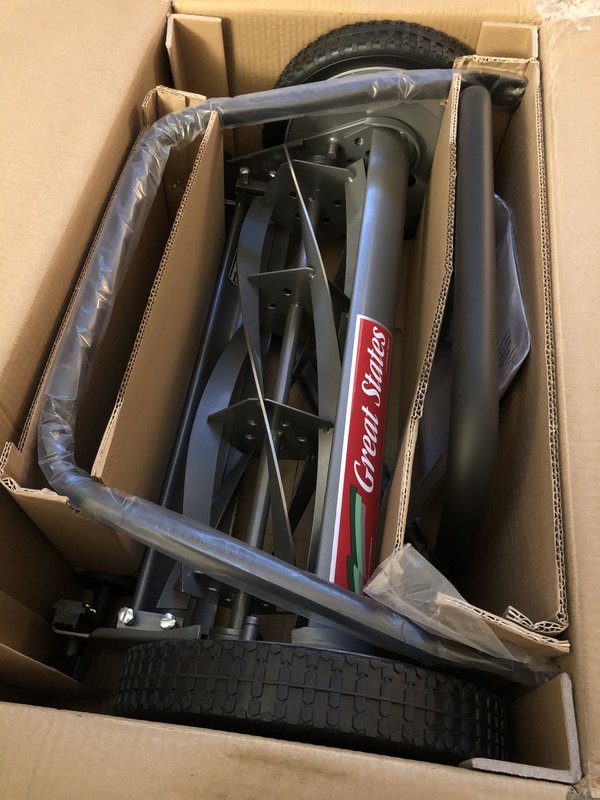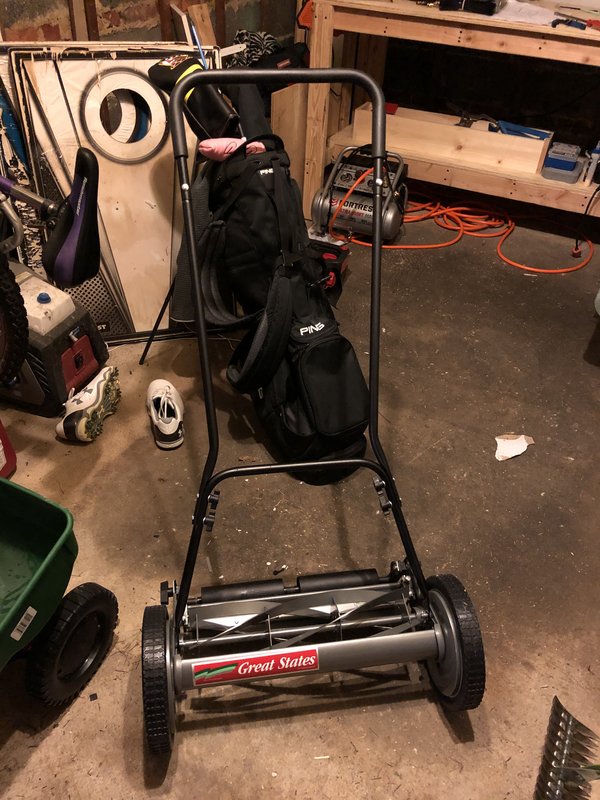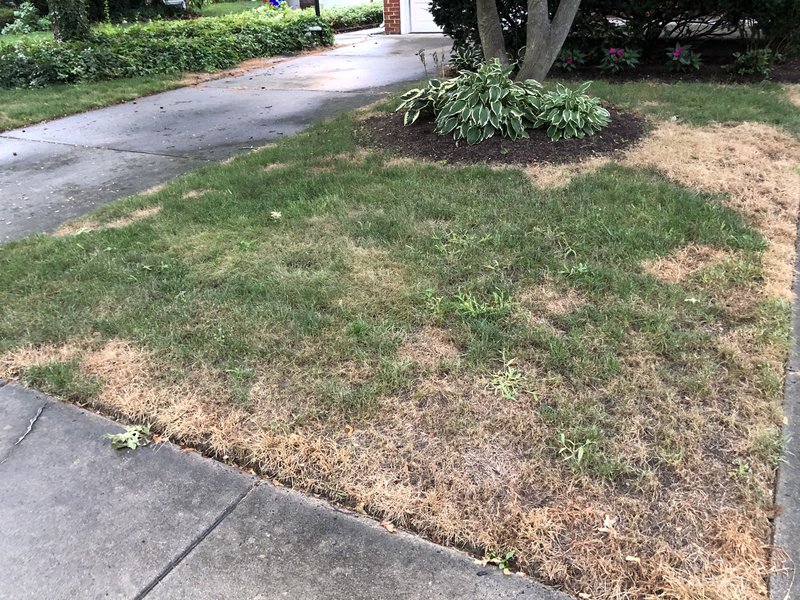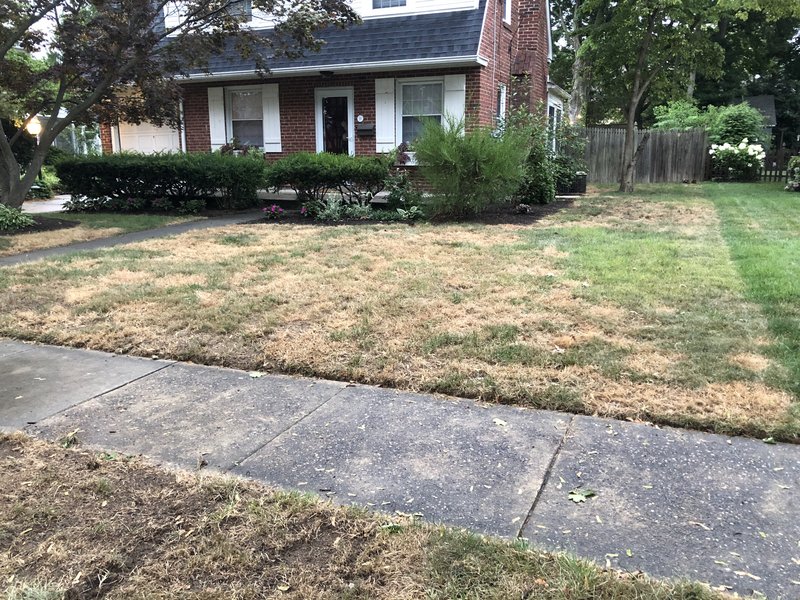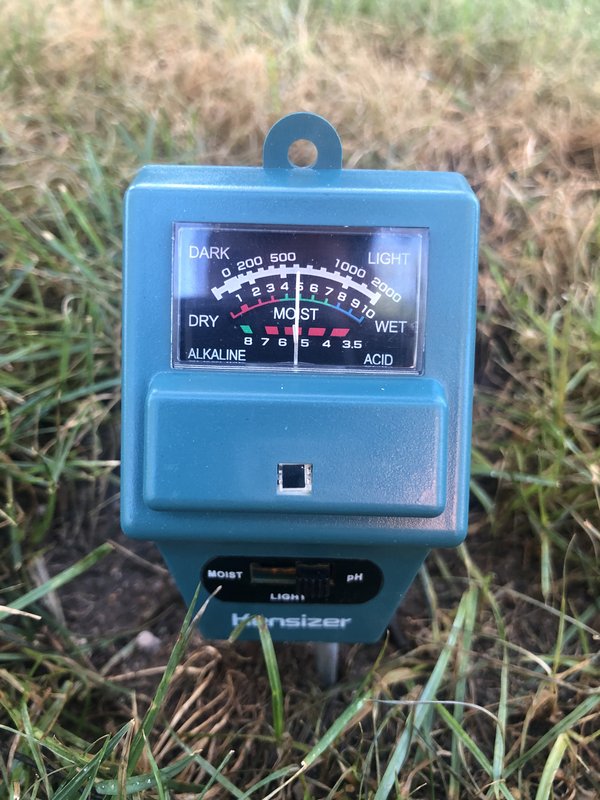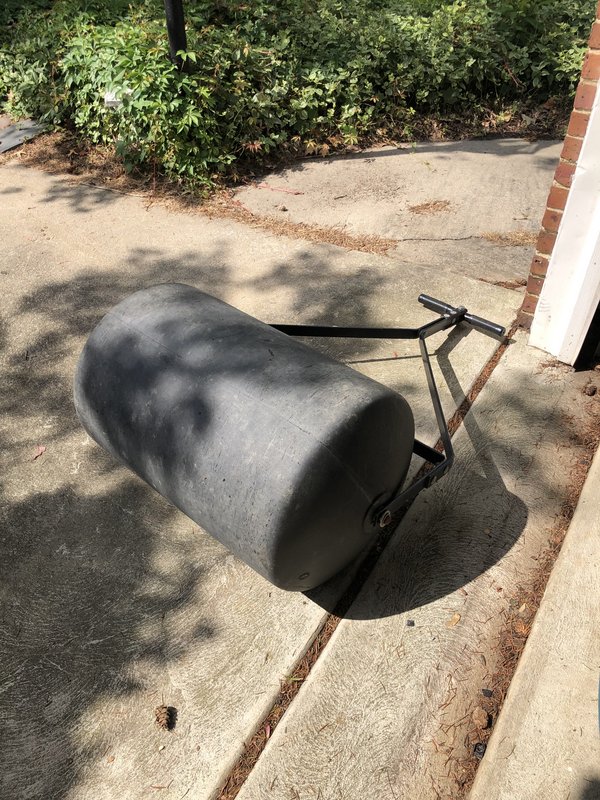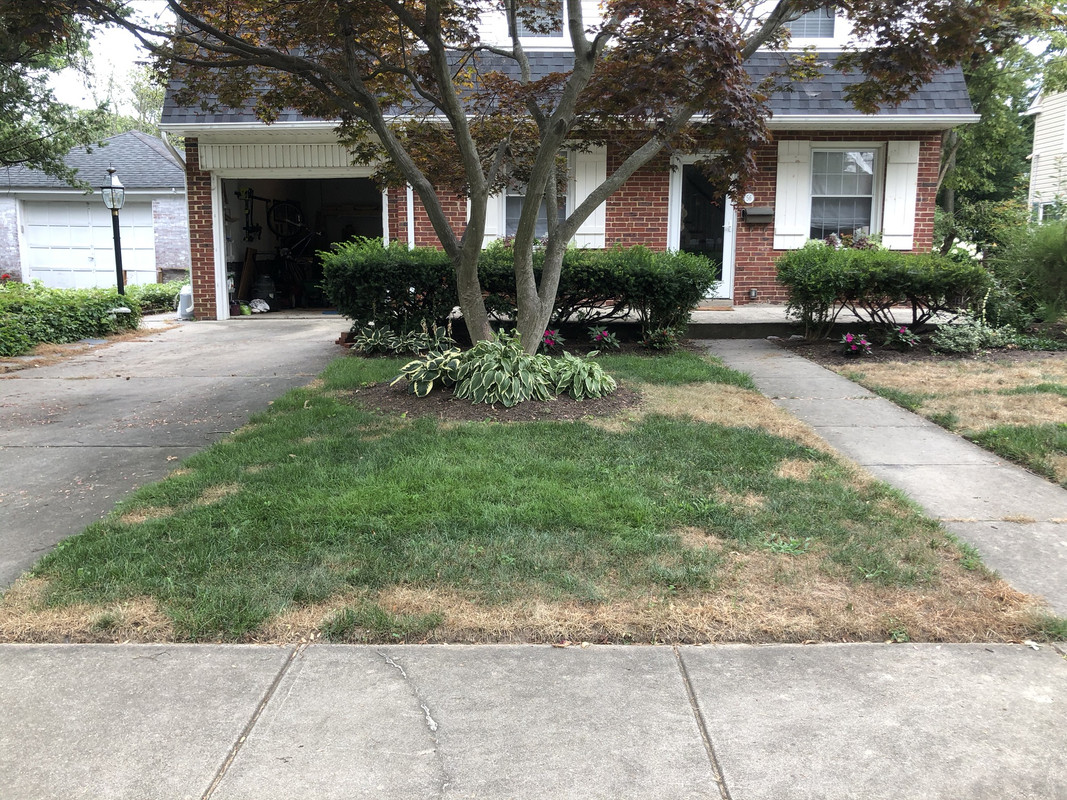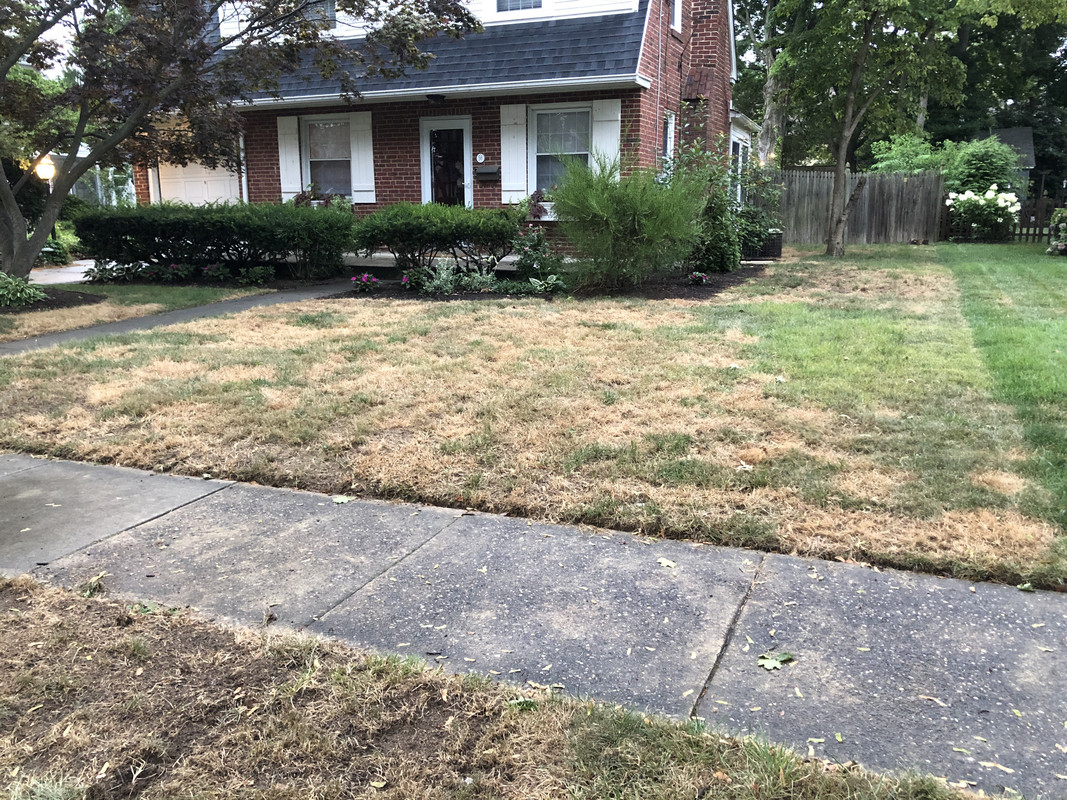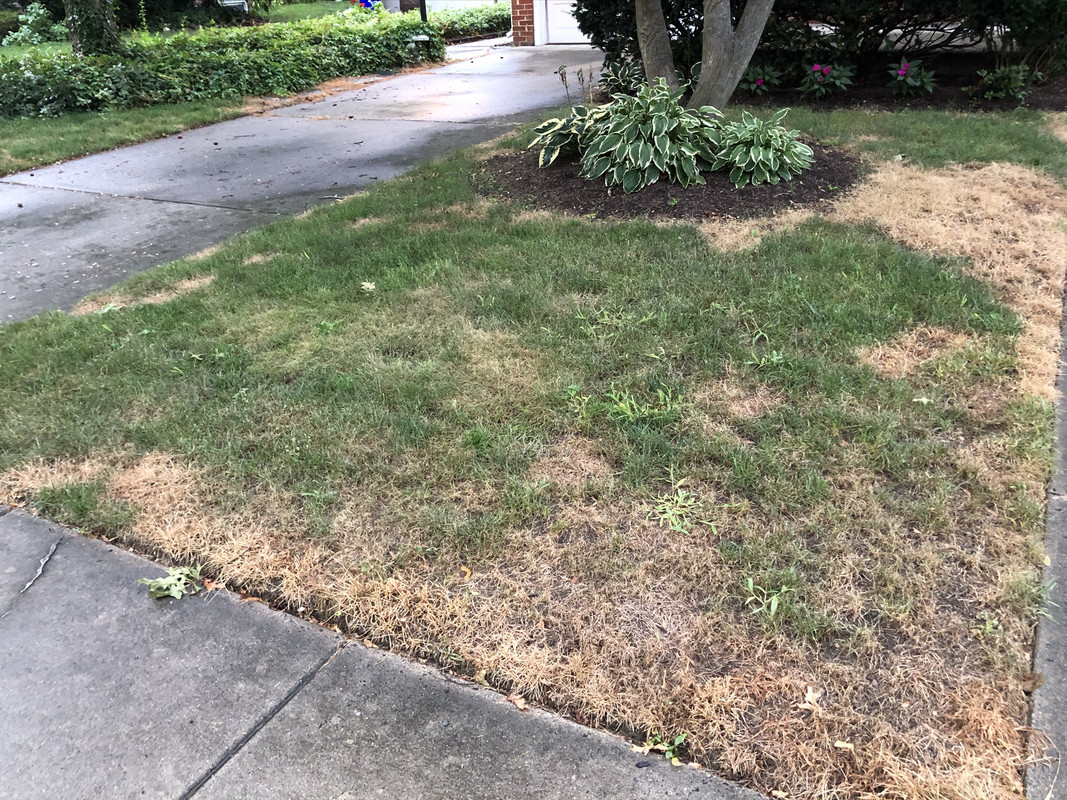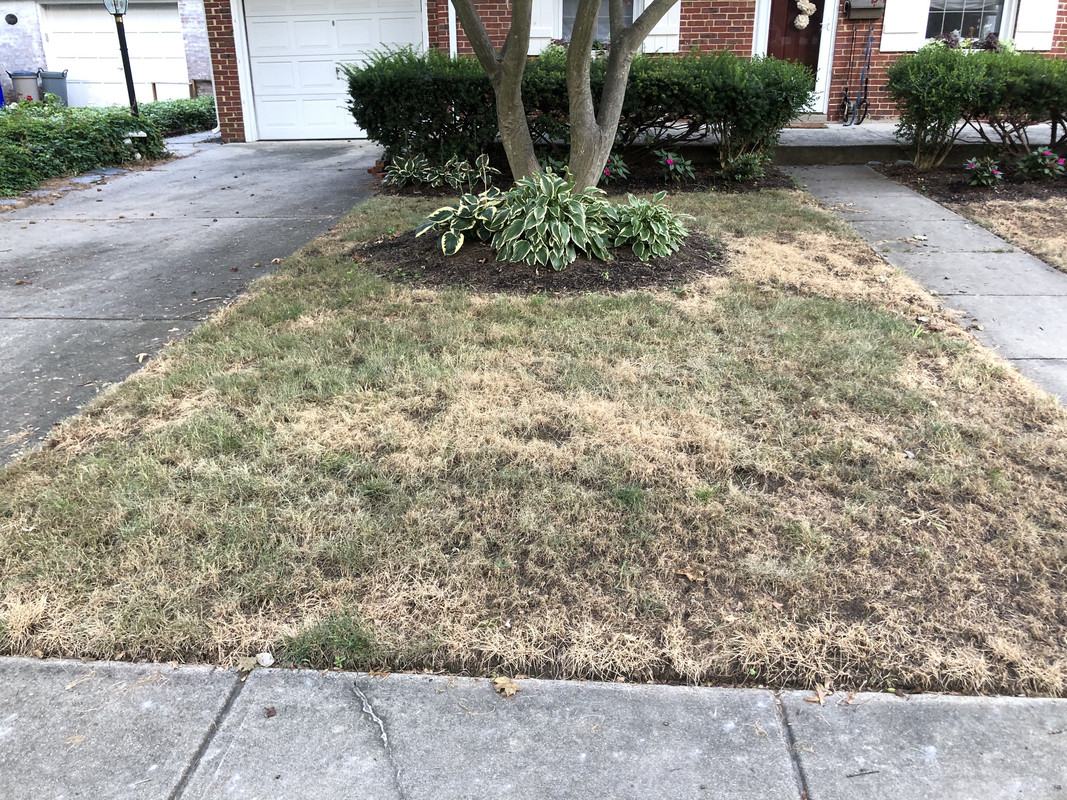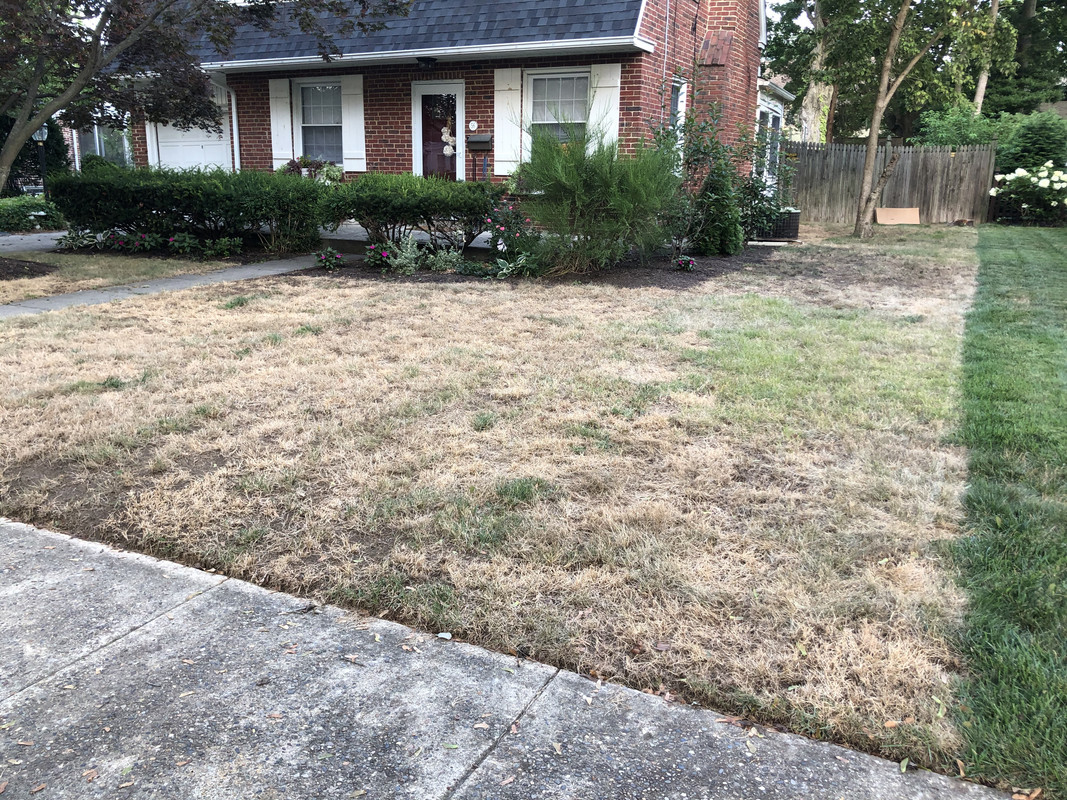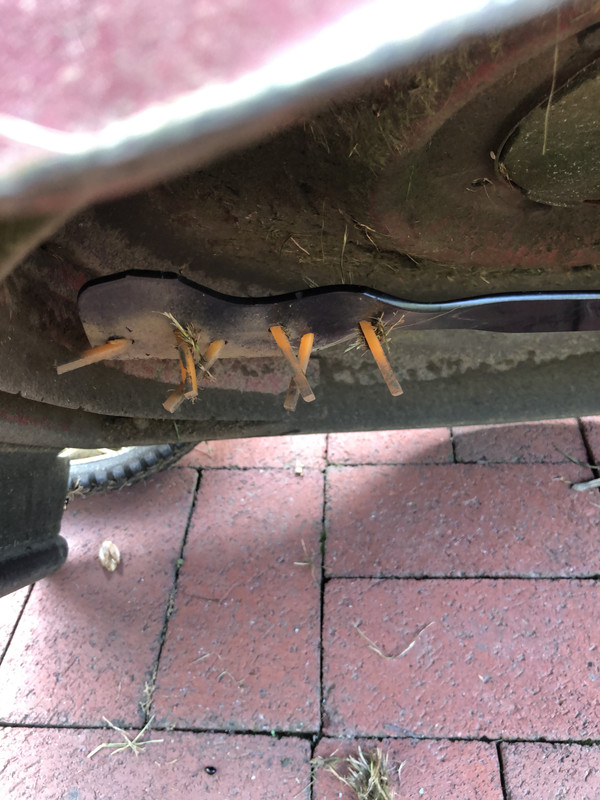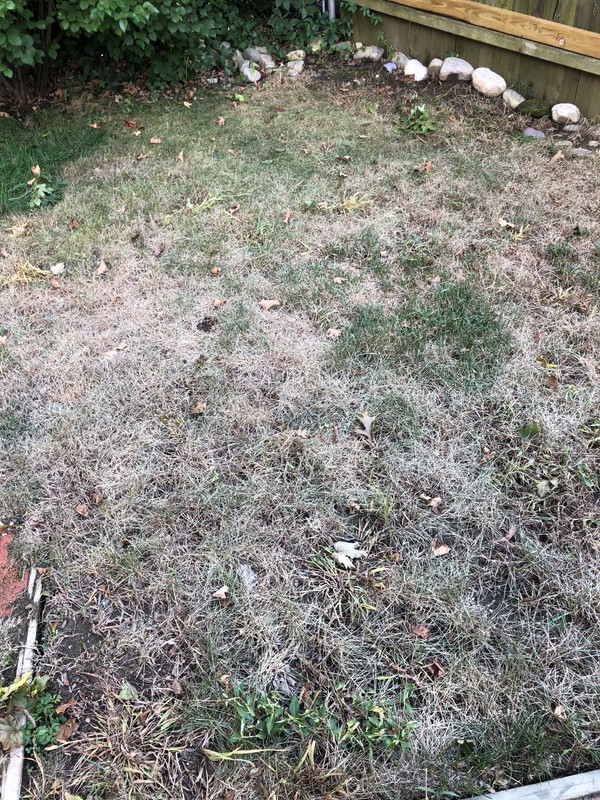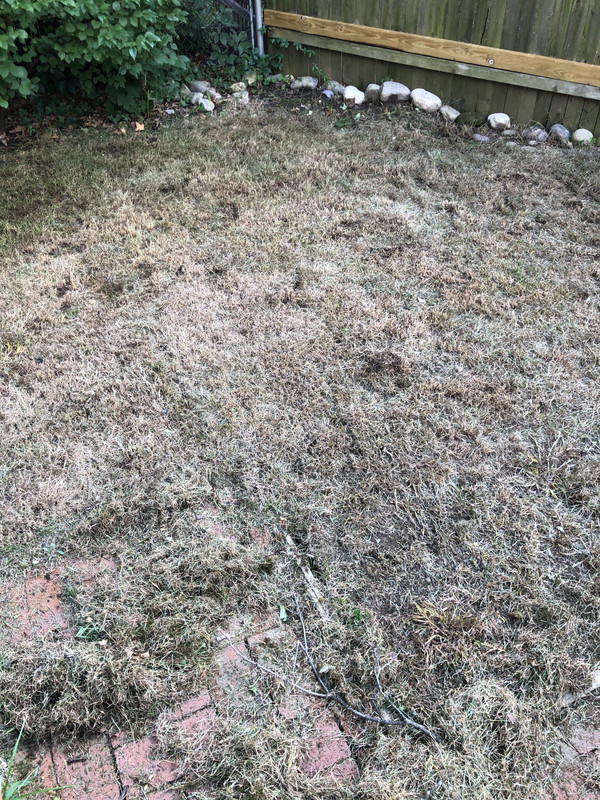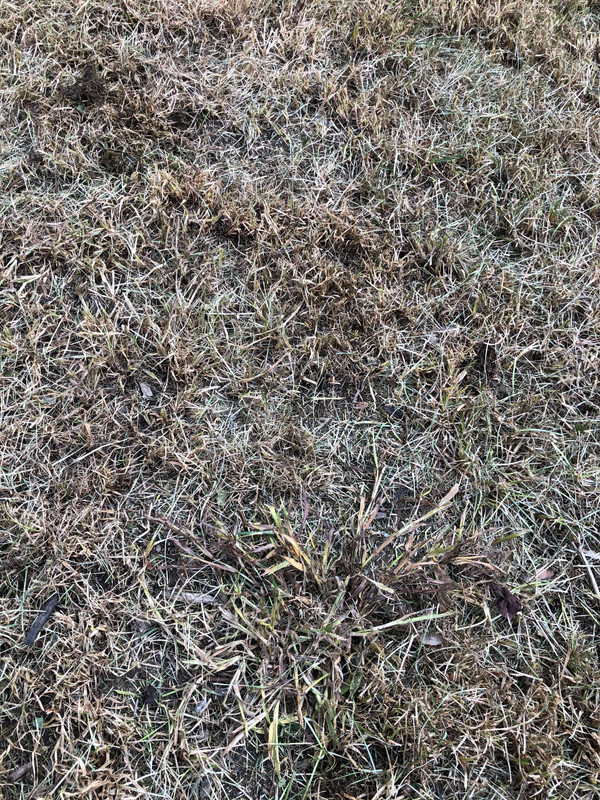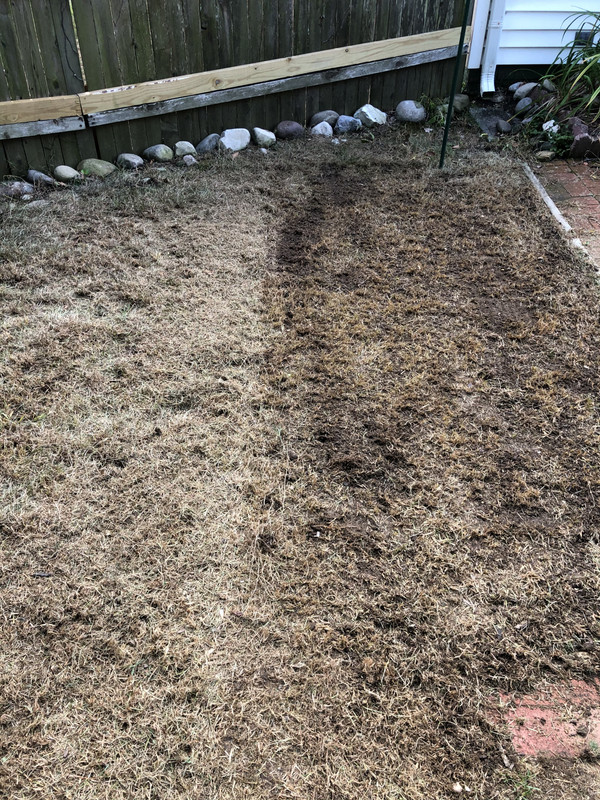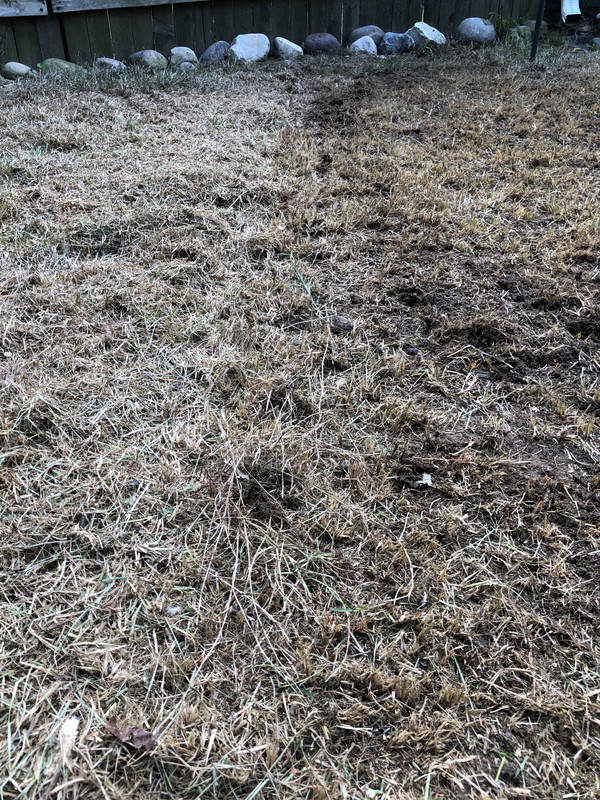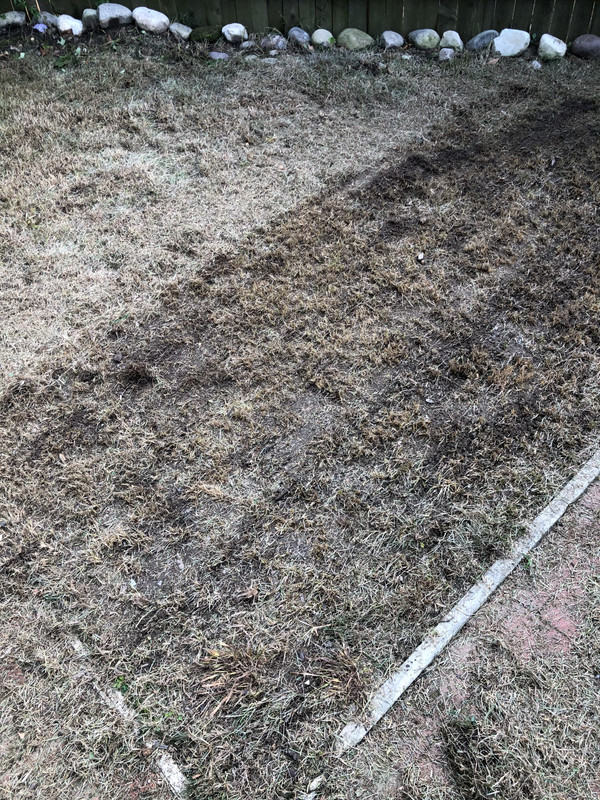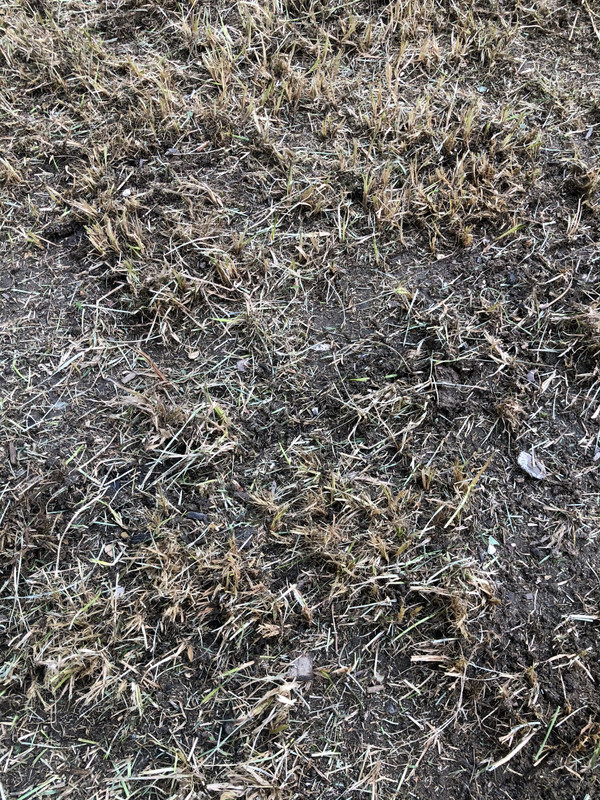Hey All! Relatively new to the community here, but have been perusing, researching, and learning as much as I can about lawn care over the last few months both here and on YouTube. I'll be tackling my first lawn renovation this year, but first a little backstory.
My wife and I bought our first home in October of 2019. I had always loved lawn care in the homes I grew up in, but never more than just mowing, landscaping, occasionally fertilizing, etc. When winter turned to spring here in southern NJ, my neighbors lawns were dominating mine and I wanted to turn it around. I ended up doing minimal research and ended up with a bag of Milorganite and a bag of Lesco seed because one of my family members recommended overseeding all throughout the year. Yea, I know.
So, I saw a rapid turnaround. My lawn greener up and the seed grew in fairly well. My lawn looked great. This was mid June:

However, I started to notice some problems. I had moss in some areas, some of the areas I had patched were browning a bit, and most of the seed that I had planted a couple of months earlier was just not maturing. It stayed a lime green and the blades were very thin. I then stumbled upon a YouTube video by The one and only Allyn Hane, the Lawn Care Nut... I was trying to figure out why I was seeing mushrooms pop up in my lawn. I then found myself deep in a hole of subscribing to every person I could. Ryan Knorr, Lawncology, GCI Turf, Lawn Rebel, all of them. I quickly realized the mistakes I made along the way:
1) no soil test
2) soil compaction left unaddressed
3) didn't measure my yard properly
4) bad about reading labels
All of these things seem so basic, but I really screwed them up at the beginning of my lawn journey. Basically, the seed I had planted was having a very hard time establishing a root system and maturing because my pH was very low (5.3) and the soil was very compacted. Also, because I didn't measure my yard properly and didn't really pay close enough attention to bag rates and labels - thinking my yard was almost twice as big as it actually was - I ended up applying more than double the amount of seed I needed to for overseeding and nearly twice the amount of fertilizer I needed. Now I was using mostly organic fertilizer, so fear of burn wasn't a problem, but I pushed insane top growth with each application and didn't even know micronutrients were a thing.
This was just a few weeks after that first picture:
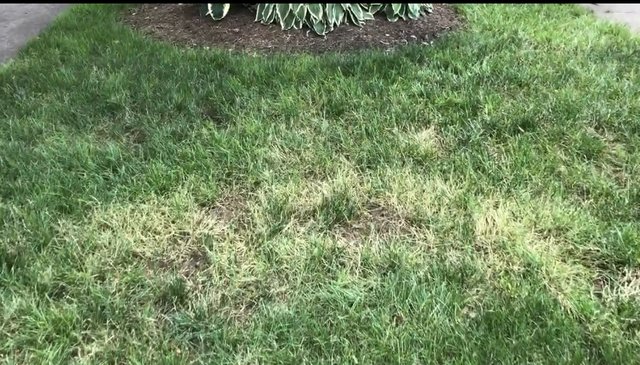
Because of all the overcrowding, when the heat and humidity of late spring/early summer hit, the new grass checked out almost immediately. Whether it was disease or what, I'm not sure, but it went quick. And not just dormant, but dead. Never stood a chance. However, the more I learned from this great community the more I realized why, so I began focusing on the things I needed to fix.
Instead of focusing on the grass, I set my attention to the soil. I got a soil test done, put down some liquid aeration to loosen things up, and dethatched the lawn on the course to starting over. After some convincing and persuasion, I received the go ahead to do a full renovation, which brings me to today. Next post will discuss what steps I've begun taking, as well as what the next few weeks will look like.
My wife and I bought our first home in October of 2019. I had always loved lawn care in the homes I grew up in, but never more than just mowing, landscaping, occasionally fertilizing, etc. When winter turned to spring here in southern NJ, my neighbors lawns were dominating mine and I wanted to turn it around. I ended up doing minimal research and ended up with a bag of Milorganite and a bag of Lesco seed because one of my family members recommended overseeding all throughout the year. Yea, I know.
So, I saw a rapid turnaround. My lawn greener up and the seed grew in fairly well. My lawn looked great. This was mid June:

However, I started to notice some problems. I had moss in some areas, some of the areas I had patched were browning a bit, and most of the seed that I had planted a couple of months earlier was just not maturing. It stayed a lime green and the blades were very thin. I then stumbled upon a YouTube video by The one and only Allyn Hane, the Lawn Care Nut... I was trying to figure out why I was seeing mushrooms pop up in my lawn. I then found myself deep in a hole of subscribing to every person I could. Ryan Knorr, Lawncology, GCI Turf, Lawn Rebel, all of them. I quickly realized the mistakes I made along the way:
1) no soil test
2) soil compaction left unaddressed
3) didn't measure my yard properly
4) bad about reading labels
All of these things seem so basic, but I really screwed them up at the beginning of my lawn journey. Basically, the seed I had planted was having a very hard time establishing a root system and maturing because my pH was very low (5.3) and the soil was very compacted. Also, because I didn't measure my yard properly and didn't really pay close enough attention to bag rates and labels - thinking my yard was almost twice as big as it actually was - I ended up applying more than double the amount of seed I needed to for overseeding and nearly twice the amount of fertilizer I needed. Now I was using mostly organic fertilizer, so fear of burn wasn't a problem, but I pushed insane top growth with each application and didn't even know micronutrients were a thing.
This was just a few weeks after that first picture:

Because of all the overcrowding, when the heat and humidity of late spring/early summer hit, the new grass checked out almost immediately. Whether it was disease or what, I'm not sure, but it went quick. And not just dormant, but dead. Never stood a chance. However, the more I learned from this great community the more I realized why, so I began focusing on the things I needed to fix.
Instead of focusing on the grass, I set my attention to the soil. I got a soil test done, put down some liquid aeration to loosen things up, and dethatched the lawn on the course to starting over. After some convincing and persuasion, I received the go ahead to do a full renovation, which brings me to today. Next post will discuss what steps I've begun taking, as well as what the next few weeks will look like.


